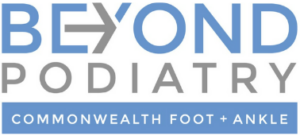CLUBFOOT
Clubfoot is one of the most common, non-life threatening, major birth defects among infants globally. Approximately one in every 1,000 newborns has clubfoot. Of those, one in three have both feet clubbed. The exact cause is unknown. Two out of three clubfoot babies are boys. Clubfoot is twice as likely to occur if one or both parents and/or a sibling has had it. Less severe infant foot problems are often incorrectly called clubfoot.
Clubfoot twists the heel and toes inward. It often appears like the top of the foot is on the bottom. Additionally, the clubfoot, calf, and leg are smaller and shorter than normal. When clubfoot is detected at birth, it is not painful and is correctable.
The goal of treating clubfoot is to make the infant’s clubfoot (or feet) functional, painless, and stable by the time he or she is ready to walk. Serial casting is the process used to slowly move the bones of a clubfoot into the proper alignment. The doctor starts by gently stretching the child’s clubfoot toward the correct position. A cast is put on to hold the foot in place. One week later, the cast is removed, the baby’s foot is stretched a little farther toward the correct position, and a new cast is applied. X-rays are used throughout the process to check on progress toward proper foot alignment. Casting generally repeats for 6-12 weeks, and may take up to 4 months.
About half the time, clubfoot straightens with casting. Once the proper foot alignment is achieved, the child is fitted with special shoes or braces to keep the foot straight once corrected. These maintenance devices are used until the child has been walking for up to a year or more. Muscles for children with clubfoot commonly try to return to the clubfoot position; a regular occurrence among 2 and 3 year olds, but a condition that may continue up to age 7.
In some cases, stretching, casting, and bracing is not enough to correct clubfoot. Surgery may be required to adjust the tendons, ligaments, and joints in the foot and ankle.


